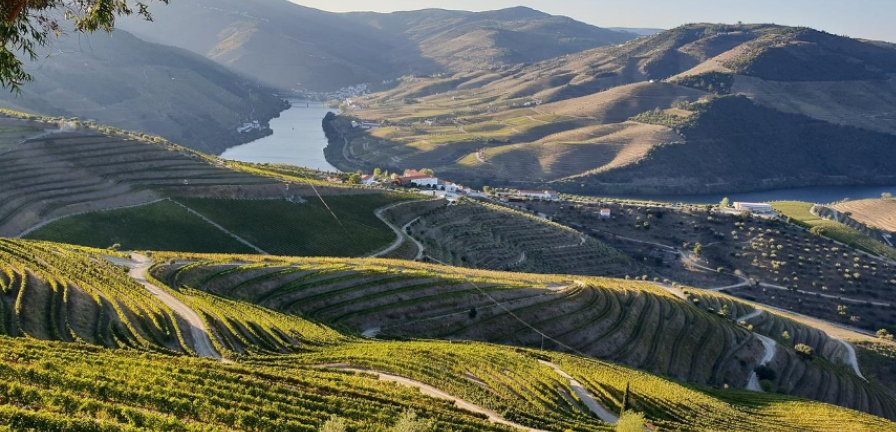Tucked away in northern Portugal, the Douro Valley is a region where history and culture converge to create one of the world’s most celebrated wine-producing areas. Known primarily for its Port wine, this stunning UNESCO World Heritage site offers a rich tapestry of vineyards, dramatic landscapes, and a deep-rooted winemaking tradition that dates back over 2,000 years. Whether you’re a wine connoisseur or simply an admirer of beautiful landscapes, a journey through Porto and the Douro Valley reveals the soul of Portuguese wine.
A Historical Wine Tradition
The Douro Valley is one of the oldest wine regions in the world, with evidence of winemaking dating back to the Romans. However, it was in the 17th century that the region gained international acclaim with the rise of Port wine, a sweet, fortified wine that became particularly popular in England. The relationship between Portugal and Britain grew stronger after the signing of the Methuen Treaty in 1703, which allowed Portuguese wines to enter the British market with low tariffs, spurring the growth of Port wine production.
Porto, the coastal city from which Port wine gets its name, became the centre of trade, with barrels of wine transported down the Douro River to the cellars of Vila Nova de Gaia, just across the river from Porto, where the wine would age and be shipped abroad.
The Wines of Porto: A Deep Dive into Port Wine
Port wine is the heart of this region’s winemaking identity, and it comes in several styles, each with its own distinct characteristics:
1. Ruby Port: The most common and affordable style, Ruby Port is aged for a shorter period (typically 2-3 years) in large tanks, which preserves its rich red colour and fresh, fruity flavours. It’s vibrant and perfect for pairing with desserts or cheeses.
2. Tawny Port: Aged in smaller barrels, Tawny Port takes on a golden-brown hue and develops nutty, caramelized flavours over time. Tawny Ports are often labelled by age (10, 20, 30, or 40 years) and are ideal for sipping as a digestif.
3. Vintage Port: Considered the pinnacle of Port wines, Vintage Ports are made from the highest-quality grapes from a single year and are only declared in exceptional vintages. They are bottled after 2-3 years of aging and continue to mature in the bottle for decades, developing complex layers of flavour.
4. Late Bottled Vintage (LBV) Port: This style falls between Ruby and Vintage Port, made from a single vintage but aged longer in barrels (typically 4-6 years). It offers the depth of a Vintage Port but is ready to drink sooner.
5. White Port: Produced from white grapes, this lesser-known style of Port ranges from dry to sweet and is often enjoyed as an aperitif, sometimes mixed with tonic water for a refreshing summer drink.
The Douro Valley: A World-Class Wine Region
While Porto is synonymous with Port wine, the Douro Valley is the true heart of winemaking in the region, producing not only Port but also a range of exquisite table wines. The valley’s unique terroir, characterized by steep terraces of schist soil and a dramatic climate with hot summers and cold winters, is ideal for growing a wide variety of grape varieties.
Red Douro Wines: In recent years, the Douro has gained a reputation for producing high-quality red wines, made from indigenous grape varieties such as Touriga Nacional, Tinta Roriz (Tempranillo), and Touriga Franca. These wines are often rich, full-bodied, and packed with dark fruit flavours, combined with earthy, herbal notes. Many of these reds are aged in oak barrels, giving them structure and aging potential.
White Douro Wines: While red wines dominate the region, the Douro Valley also produces exceptional white wines, which are often overshadowed by their more famous counterparts. White Douro wines, made from native grapes like Rabigato and Viosinho, are typically fresh, aromatic, and mineral-driven, making them ideal for pairing with seafood or enjoying on a warm day.
Wine Tourism in Porto and the Douro Valley
Wine lovers from all over the world flock to Porto and the Douro Valley to experience its wines firsthand. The city of Porto is the gateway to the Douro region and offers a wealth of opportunities to explore the world of Port wine. A visit to one of the Port lodges in Vila Nova de Gaia is essential—here, you can tour the historic cellars of renowned producers like Taylor’s, Graham’s, and Sandeman, and sample their finest Ports.
The journey doesn’t end in Porto; the Douro Valley offers endless opportunities for wine tourism. River cruises along the Douro are a popular way to explore the valley’s vineyards and quintas, allowing travellers to enjoy the stunning scenery while sampling wines along the way. For those looking to stay longer, many quintas offer accommodation, allowing visitors to fully immerse themselves in the winemaking lifestyle, from grape harvesting to wine tasting.
Sustainability and Innovation
While the Douro Valley’s winemaking tradition is ancient, the region is not stuck in the past. Many wineries are now focusing on sustainability, using organic farming practices and modern winemaking techniques to protect the environment and ensure the long-term future of the region.
At the same time, a new generation of winemakers is experimenting with styles and methods that push the boundaries of traditional Douro winemaking. Blends of indigenous grape varieties, single-vineyard wines, and natural wines are becoming more common, offering a fresh take on the region’s age-old craft.
The wines of Porto and the Douro Valley offer a unique window into Portugal’s rich winemaking heritage. From the world-famous Port wine, with its deep history and variety of styles, to the vibrant red and white table wines of the Douro, this region is a treasure trove for wine enthusiasts. With its stunning landscapes, welcoming quintas, and a blend of tradition and innovation, a visit to Porto and the Douro Valley is a journey not just through wine, but through time and culture. Whether sipping a glass of Tawny Port as the sun sets over the Douro River or enjoying a robust Douro red in a hillside village, the region promises an unforgettable experience for anyone seeking the true taste of Portugal.

